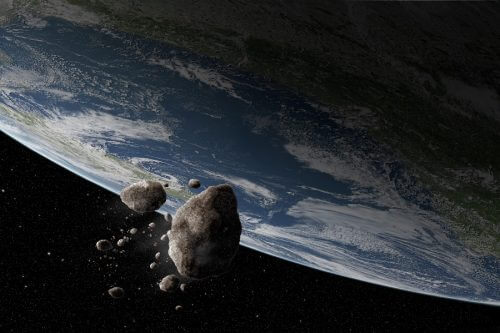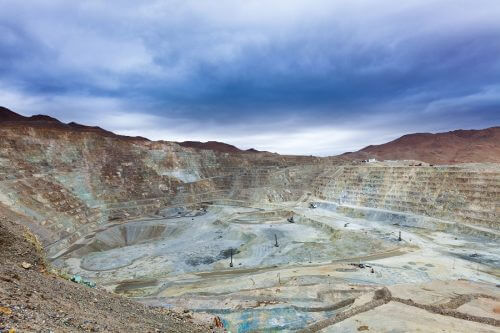Chris Lockey, CEO of Planetary Resources: "Energy for crushing rocks can be taken from the sun. Cooling systems is not a problem when the background temperature is minus 270 degrees Celsius. And minimal pulling force eliminates the need for heavy mechanization."

Natural resources are essential to society. In fact, without them everything that defines the modern world would simply disappear, including the houses we live in, the cars we drive, and the technology we use to communicate or save lives – even the shoes we wear and our toothbrushes. But the future of natural resource mining is unclear. We have already extracted the most accessible materials, and those of the highest quality that we found, and as the population of the earth continues to grow, the demand for natural resources continues to grow even more.
There's no quick fix, but there are currently many ideas about the right way to approach the challenge. One of them concerns asteroid mining.
The "crumbs" of the universe can be the solution to the enormous burden created on the limited resources of the earth. This may sound like science fiction, but both public bodies and private companies are working to try and understand whether asteroids can become a new source of materials that we need here on Earth. The government of Luxembourg, which positions itself as a European center for space exploration, estimates that near-Earth asteroids contain enough of each of the elements required to support a population of 500 million people living comfortably. The central asteroid belt can contain as much as 100,000 times that amount of material.
"A platinum-rich asteroid could contain 147 times the annual output of the Earth today. Expanding the presence of these rare metals in the Earth's economy will open up new opportunities for innovation and growth," said Chris Lewicki, president and CEO of Planetary Resources, a private space exploration company that plans a research launch by 2020.
Besides the benefits of space mining for our immediate environment, Loki explains that: "Everything that makes discovery and mining difficult and expensive on Earth, is not such a big problem in space."
Energy for crushing stones can be taken from the sun. Cooling systems is not a problem when the background temperature is minus 270 degrees Celsius. And minimal traction force eliminates the need for heavy mechanization.

The commercial outlook for mining is not that far off. Government-funded missions such as those of NASA, JAXA and ESA have already demonstrated the possibility of this and the required technical capabilities. The Luxembourg government has already begun building a legal framework for space mining activities that will guarantee the rights to the resources in accordance with international law.
"Our goal is open access to previously unexplored wealth on lifeless stones traveling in space, without harming the natural environment," said Etienne Schneider, Luxembourg's Minister of Economy.
Scientists believe that asteroids are a promising avenue because they are made of the same minerals as Earth. NASA, for example, created the Asteroid Redirect mission with the goal of extracting a "boulder" from an asteroid close to Earth, and bringing it as close as possible to the Moon so that astronauts can learn what it has to offer.
While the idea of asteroid mining may be getting a lot of attention, there are other avenues, such as using autonomous mechanization or encouraging smart consumerism, to ease Earth's resources. This is not something that one group can achieve alone. Mining companies, communities, environmental groups, and individuals must work together to find new approaches.
"If we want an active economy with a high global quality of life, and also protect the planet for future generations, we must take responsibility, be involved, and find the balance that works," said Marni Rabso, vice president of natural resources at Dassault Systèmes. Dassault Systèmes' 3DEXPERIENCE platform can play a central role in making new solutions a reality, thanks to its ability to create virtual worlds in which "what if" scenarios can be simulated. and design and research new technologies.

4 תגובות
Undoubtedly, mining ores from asteroids is a very complex and challenging task.
In addition to the cost problem mentioned by the commenters before, there is another problem and that is the landing
The asteroid, or the minerals from the asteroid, to Earth, in a controlled manner.
In my opinion, humanity should focus today on maximum energy savings. Electrical products that consume a minimum of electricity. Electrical appliances and very high quality products with a very long useful life. The houses should be built with light construction that consumes less raw materials and is significantly more efficient than conventional construction and furthermore results in significant energy savings compared to conventional construction. Also, we need to switch to efficient and high-quality public transportation. The use of LEDs, stick computers, solar heaters, cooking and baking based on the heat energy of the sun, etc. Solar cells as of today are a very inefficient technology, with a relatively short shelf life (20 years) and very low energy efficiency. They do not constitute a solution to the problem of the lack of natural resources and energy that we are expected to face in the future, especially in light of the fact that the Earth's population is growing at a high rate and in about 30 -40 years we will find ourselves in a situation where half of the world's population enters the poverty trap and dies of hunger and suffers from diseases and poor transportation as a result of the lack of resources. The future technology is going to be very dependent on biotechnology in order to develop genetically modified plants for field crops in the new weather conditions in light of global warming and it will also be necessary to develop computers and technologies based on living tissues and cells. The next processors and computers will have to be built from brains and living tissues or from plants designed to perform calculation and processing operations as today's computers perform.
The amount of energy needed to fly a spacecraft to an asteroid will always be more expensive than the amount of minerals that can be brought from there.
At greater depths of the earth there are many more minerals than on the asteroids and it is less expensive to reach them.
All these fictions about any future benefit, landing on asteroids, flights to Mars, etc. originate from companies that make a living from space and scientists who try to show that there is supposedly any benefit to humanity in the colossal waste of resources beyond the satisfaction of scientific curiosity, when the goal is to motivate the politicians to give them more budgets.
The first use for asteroids will probably be to build a shell for a spacecraft on its way to Mars to protect it from cosmic radiation and eruptions from the sun - without a serious shield the passengers will arrive fried. For mundane uses it will probably be too expensive, even if they produce platinum and iridium and the rest of the family.